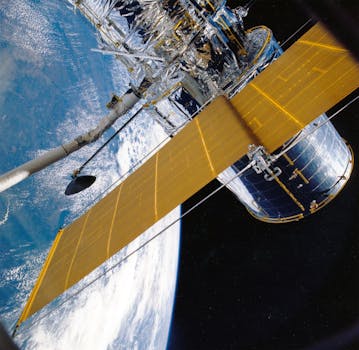
Revolutionizing Connectivity: The Latest Breakthroughs in Satellite Telecommunications. The world of satellite telecommunications has witnessed significant advancements in recent years, transforming the way we communicate and access information. With the increasing demand for global connectivity, satellite telecommunications have become a vital component of modern communication systems. In this article, we will delve into the latest breakthroughs in satellite telecommunications and their impact on revolutionizing connectivity.
The latest breakthroughs in satellite telecommunications have been driven by advances in technology, particularly in the areas of satellite design, launch systems, and ground equipment. One of the most significant developments is the introduction of low-Earth orbit (LEO) satellites, which offer faster and more reliable communication services compared to traditional geostationary satellites. LEO satellites are designed to operate at lower altitudes, typically between 160 and 2,000 kilometers, allowing for reduced latency and increased bandwidth.
Another significant breakthrough is the development of high-throughput satellites (HTS), which provide greater bandwidth and faster data transfer rates. HTS satellites use advanced technologies such as frequency reuse and beamforming to increase capacity and reduce interference. This has enabled satellite telecommunications to support a wide range of applications, including broadband internet, mobile connectivity, and IoT services.
The use of advanced materials and manufacturing techniques has also led to the development of smaller and more efficient satellites. Small satellites, also known as smallsats, are designed to be compact and lightweight, making them easier to launch and deploy. This has reduced the cost of access to space and enabled the deployment of large constellations of satellites, further increasing global connectivity.
In addition to these technological advancements, there have been significant developments in the area of satellite launch systems. The introduction of reusable launch vehicles, such as SpaceX’s Falcon 9, has reduced the cost of launching satellites into orbit. This has made it more feasible for companies to launch large constellations of satellites, further increasing global connectivity.
Furthermore, the development of advanced ground equipment, such as phased array antennas and modem technologies, has improved the efficiency and reliability of satellite telecommunications. These advancements have enabled faster and more secure data transfer, making satellite telecommunications a viable option for a wide range of applications.
In conclusion, the latest breakthroughs in satellite telecommunications have revolutionized global connectivity, providing faster, more reliable, and more efficient communication services. As technology continues to advance, we can expect to see even more significant developments in the field of satellite telecommunications, further transforming the way we communicate and access information.
The future of satellite telecommunications holds much promise, with the potential to connect even the most remote and underserved communities. As the demand for global connectivity continues to grow, satellite telecommunications will play an increasingly important role in providing access to information and communication services. With ongoing innovations and advancements, the possibilities for satellite telecommunications are endless, and we can expect to see significant improvements in the years to come.




